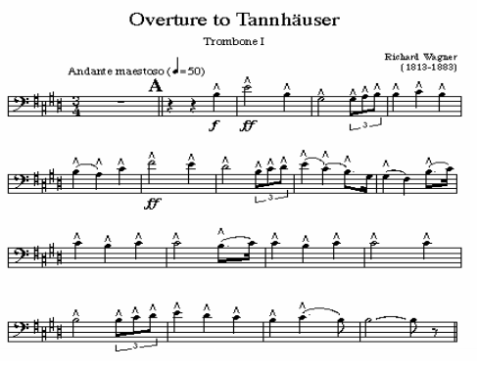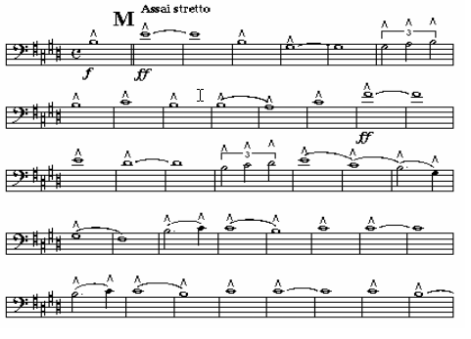Richard Wagner – Tannhäuser
Wagner composed this opera in 1843 – 1844. While playing this opera, performers must pay attention to rhythm, intonation and sound. In this piece, there are two parts which are the most important to perform. In score these parts are defined according to the rehearsal marks “A” and “M”. These two parts seem like the same but there are some differences to be careful about while performers are exercising. Performers must practice hard on these two parts for orchestra exams.
“A” part’s meter is 3/4 and performers must play this part in consistent tempo. While playing triplets, it may not get slower. In addition to that punctuated eighth notes, which are in the third beats, should be equally performed and sixteenth notes should be just on time, without being late or too early. For a good sound, without mistakes in notes and rhythms, performers also have a good mouth condition.
In part “M”, main theme’s note values were augmented. Because of that, performer must play this part, brighter and with a softer sound. Triplets must be played without getting slower and in the same articulation. Performers must be careful at the end of the solo, because there is a high “g” which is hard to play at the end. The reason is that, generally performers will get tired. It should not be played ff, e.g. not be forced, for good intonation and timbral quality. In spite of the fact that it reads ff for that part, which could force performers and tires the lips a lot, if performers play just f, audience can hear other instruments too.
While practicing that important solo, it should be performed in a singing manner and long lines should be preferred. Thus, it can be played more than once without being tired.



